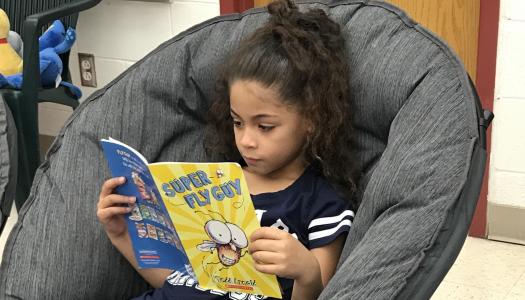Daily 5: Structure Naturally Supports Multilingual Students
Join Our Community
Access this resource now. Get up to three resources every month for free.
Choose from thousands of articles, lessons, guides, videos, and printables.
Pam and Liliya: Seeing Beyond
Daily 5 is a structured design that allows students to authentically practice what they need most to grow as readers and writers. Daily 5 also creates predictability and independence that support students’ success during the literacy block. These structures are essential for multilingual students (MLs), but if they’re used without additional scaffolds, those students will not fully benefit from them.
When students are learning a new language or learning in a new language, predictable structures lower their affective filters,[1] freeing their brains from anxiety and allowing them to engage in the learning behaviors. With a few intentional scaffolds, I charts created during the Daily 5 launch become strong visual tools for multilingual students, helping them to engage by improving their comprehension.
Visuals and non-linguistic representations create access to the meanings of words, phrases, texts, and concepts. Taking five seconds to add a sketch that clarifies meaning for a multilingual learner accelerates their access and increases their understanding. For even greater clarity, find photos of the desired behaviors being modeled in the classroom and place them on the I chart, but be careful to use the same visual (sketch/photo) on all of the students’ I charts.
Brain research has proven that color coding helps people process and retain information in chunks. Practice this in your classroom by writing the I and title of an I chart in black and then choosing a different color for each individual behavior that you want to teach. On every I chart, for example, “Get started right away” might be blue while “Stay in one spot” is in red. Color coding makes common student behaviors more visually obvious across all of the Daily 5 I charts, once again accelerating multilingual students’ access to Daily 5 structures.
We know how critical it is to create a linguistically inclusive environment in our classrooms. If pre-identified words that carry meaning appear on the I charts of multilingual students in their heritage language, it benefits every student in the classroom and lowers the affective filters for your multilingual students.
Daily 5 is designed to allow students practice in reading, writing, listening, and speaking, which are the four domains of language acquisition. By adding a few purposeful scaffolds for multilingual students, you will provide an inclusive environment that accelerates learning. It is critical to remember that for a student who is learning English, the message will not be in the English words or English text. As you are planning, teaching, and reflecting, you must ask yourself: What strategies did I include in this lesson to help my multilingual students access and engage in the learning? Where is the message for those students?
[1] Affective filter is a metaphor that describes a learner’s attitudes that affect the relative success of second language acquisition. Negative feelings such as lack of motivation, lack of self-confidence, and learning anxiety act as filters that hinder and obstruct language learning. This term is associated with linguist Stephen Krashen’s Monitor Model of second language learning. (http://www.ldonline.org/glossary/Affective_filter)








